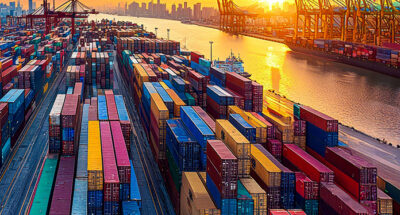From discussions I’ve had with supply chain managers over the past week, it is clear there is a huge sense of panic over the potential disruption to supply chains from Russia’s invasion of Ukraine, and the resulting wave of economic sanctions from the West.
For some sectors, the concern is well-placed. Russia and Ukraine together account for nearly 30% of the world’s wheat exports, around a fifth of its corn trade and almost 80% of sunflower oil production, according to the US Department of Agriculture. The ongoing conflict and restrictions on Ukraine’s ability to harvest and export commodities will likely lead to shortages of cereals and feed stock for animals in the long term, pushing up food prices.
Ukraine also produces most of the world’s supply of neon gas, which is critical for the production of silicon wafers, exacerbating a shortage of microchips used in everything from smartphones to cars. Some carmakers are already struggling to obtain crucial wire harnesses after factories in western Ukraine were shuttered when Russian troops rolled into the country.
The uncertainty over how long the war will last and the economic fallout for the supply of raw materials is also prompting other companies, which are not currently directly affected by shortages, to panic. Yet, in this case, panic buying by firms risks exacerbating rather than alleviating shortages, unleashing a spike of demand through the supply chain that may turn out to be phantom.
Fearing disruption to future energy supplies for manufacturers, one maker of locks is buying up steel after Germany halted the Nord Stream 2 Baltic Sea gas pipeline. But so far, the war in Ukraine has not interrupted gas supplies from Russia.
Another concern is that the disruption in Ukraine could spill over into neighbouring countries including Romania and Poland – the base for many factories supplying European companies after firms sought to bring production closer to home.
History has taught us that ripple effects from disruption caused by conflict and natural disasters can be felt widely. When the most powerful earthquake ever recorded in Japan triggered a tsunami in the north-east of the country and flooded the Fukushima nuclear power plant in 2011, it impacted electricity production nationwide, shuttering factories in the south.
But companies which fill up their warehouses now, anticipating future blockages in the supply chain, may find themselves stuck with stock they bought at elevated prices that they may struggle to shift further down the line.






